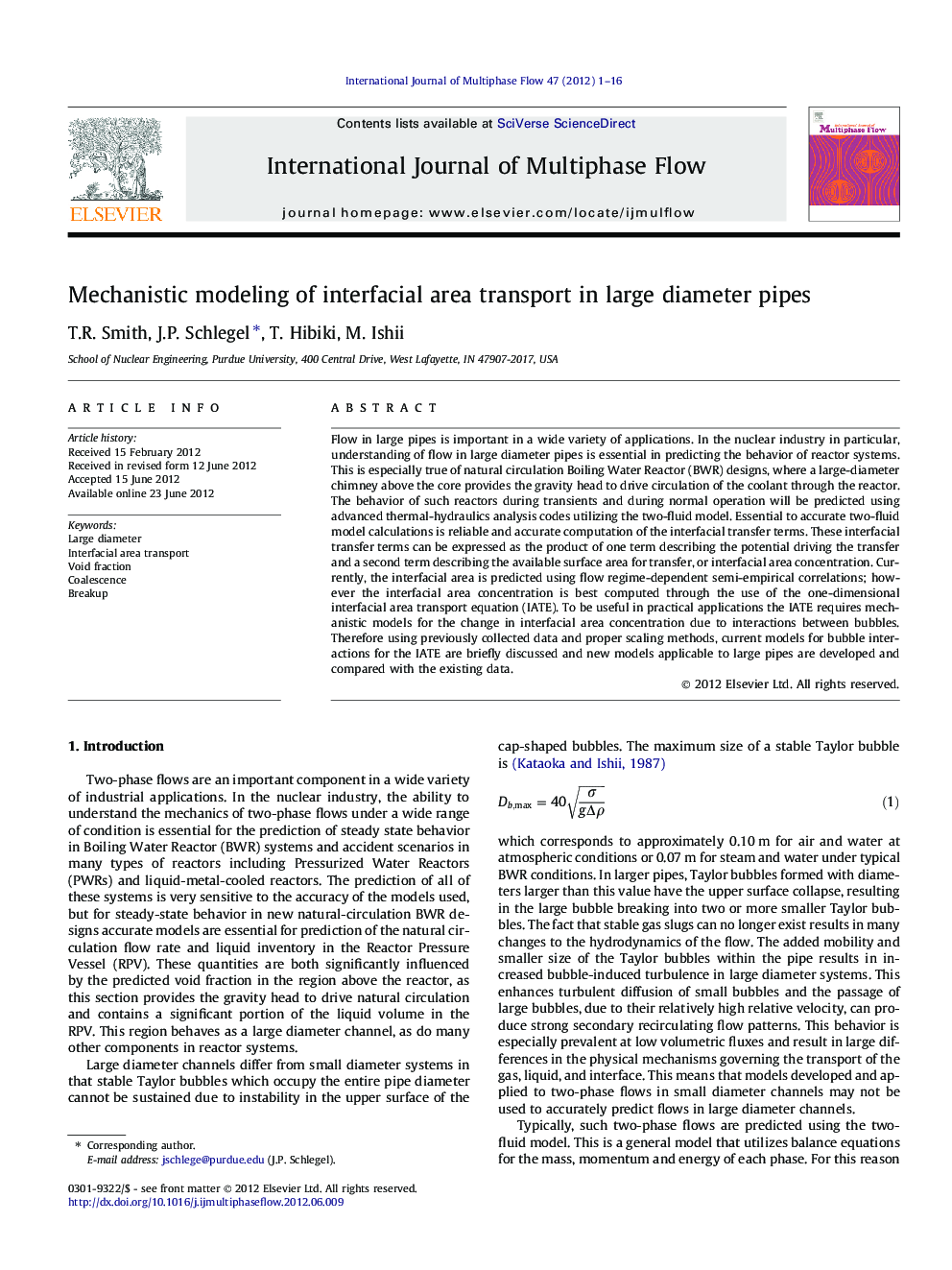| کد مقاله | کد نشریه | سال انتشار | مقاله انگلیسی | نسخه تمام متن |
|---|---|---|---|---|
| 667727 | 1458532 | 2012 | 16 صفحه PDF | دانلود رایگان |

Flow in large pipes is important in a wide variety of applications. In the nuclear industry in particular, understanding of flow in large diameter pipes is essential in predicting the behavior of reactor systems. This is especially true of natural circulation Boiling Water Reactor (BWR) designs, where a large-diameter chimney above the core provides the gravity head to drive circulation of the coolant through the reactor. The behavior of such reactors during transients and during normal operation will be predicted using advanced thermal-hydraulics analysis codes utilizing the two-fluid model. Essential to accurate two-fluid model calculations is reliable and accurate computation of the interfacial transfer terms. These interfacial transfer terms can be expressed as the product of one term describing the potential driving the transfer and a second term describing the available surface area for transfer, or interfacial area concentration. Currently, the interfacial area is predicted using flow regime-dependent semi-empirical correlations; however the interfacial area concentration is best computed through the use of the one-dimensional interfacial area transport equation (IATE). To be useful in practical applications the IATE requires mechanistic models for the change in interfacial area concentration due to interactions between bubbles. Therefore using previously collected data and proper scaling methods, current models for bubble interactions for the IATE are briefly discussed and new models applicable to large pipes are developed and compared with the existing data.
► Models developed to predict interfacial area change in large diameter pipes.
► Mechanistic models based on bubble breakup and coalescence mechanisms.
► These models have been benchmarked against data from pipes of various diameters.
► Models perform very well for bubbly and cap-bubbly flows.
Journal: International Journal of Multiphase Flow - Volume 47, December 2012, Pages 1–16